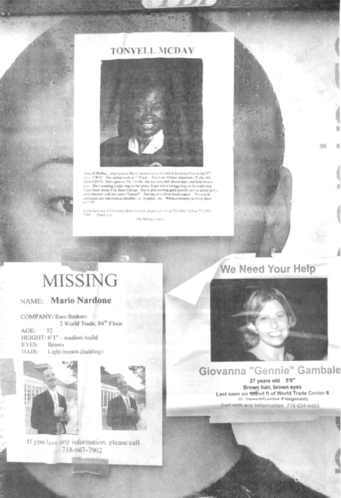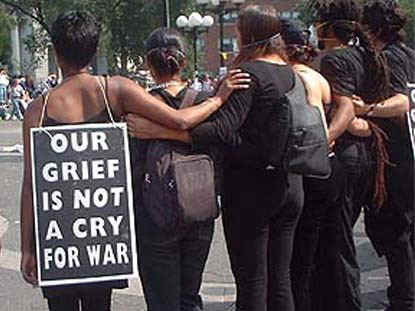|

The older we get, the more we lose; this is the law of impermanence. We lose loved ones, cherished dreams, physical strength, work, and relationships. Often, it seems like loss upon loss. All these losses bring up enormous grief that we must be prepared to embrace completely, if we are to live with open hearts.
Over the years, in working with people who are grieving, Iíve encouraged them first of all to surrender to the experience of their pain. To counteract our natural tendency to turn away from pain, we open to it as fully as possible and allow our hearts to break. We must take enough time to remember our losses -- be they friends or loved ones passed away, the death of long-held hopes or dreams, the loss of homes, careers, or countries, or health we may never get back again. Rather than close ourselves to grief, it helps to realize that we only grieve for what we love.
In allowing ourselves to grieve, we learn that the process is not cut and dried. Itís more like a spiral that brings us to a place of release, abates for a time, then continues on a deeper lever. Often, when grieving, we think that itís over, only to find ourselves swept away by another wave of intense feeling. For this reason, itís important to be patient with the process, and not to be in a hurry to put our grief behind us.
While the crisis stage of grief does pass in its own time -- and each personís grief has its own timetable -- deep feelings donít disappear completely. But ultimately you come to the truth of the adage that "love is stronger than death." I once met with a girl whose boyfirend was killed in Central America. She was grieving and it was paralyzing her life. I characterized it for her this way. "Letís say youíre in Ďwise-woman training.í" If sheís in wise-woman training, everything in her life must be grist for the mill.
-- Ram Dass, Still Here
In the Prozac Nation that we have become, sadness is practically taboo. Psychiatrists stand ready to prescribe sedatives and antidepressants even to bereaved widows at funerals, for whom out-of-control weeping and wailing might be not only appropriate but healing. In such a context, Canadian artist AA Bronsonís exhibition "Negative Thoughts," at Chicagoís Museum of Contemporary, is about as shocking as art can get these days.
Bronson was a member of General Idea, a group of three gay men whose 25-year collaboration produced an internationally acclaimed body of work that was witty, conceptual, and flagrantly gay. They often represented themselves visually as a trio of fornicating poodles and conceptually as a goddess-like character named Miss General Idea. In later years their work centered on AIDS, depicting pills (the Chicago show includes "Pla©ebo," which consists of 2,500 helium-filled pill-shaped balloons) or transforming Robert Indianaís famous LOVE logo to read AIDS. General Idea ended when the other members -- Jorge Zontal and Felix Partz -- died of the disease in 1994.
In his first major solo exhibition, Bronson steers straight into his experience of devastating loss. The show includes a 7-by-14-foot billboard-sized photo of Felix taken a few hours after his death, a series of six-foot portraits of Jorge -- blind and skeletal -- in his final week, and a nude self-portrait of Bronson lying in a coffin. Also central to the show is an 112-page book featuring an extraordinarily personal and moving essay called "Negative Thoughts," in which Bronson (who is HIV-negative) declares, "When I was younger, I considered myself 100% optimistic. But now, at the age of 53, I find myself cynical, judgmental, and depressed."
Although the work is dark and deeply upsetting, it represents a major breakthrough for the artist, who was unable to create for five years after his partnersí deaths. "Iíd been blocked for so long that I realized I had to head straight into the grief and mourning," he says. "I had to be prepared that nobody would be willing to look at it, that people would say, ĎWeíve heard too much about AIDS and dying, we want to move on.í" Having shown some pieces in Los Angeles and Vienna, Bronson said, "I know they work when I feel they are cathartic not just for me but for other people. There are an awful lot of wet eyes when people see these pictures."
Perhaps the most disorienting experience for Bronson has been learning to function as an individual. He likens it to being a stroke victim re-learning how to use his limbs. But after a period of paralysis, heís beginning to glimpse the liberation his new life holds. For one thing, after shuttling between Toronto and New York for many years, he has settled in Manhattan with his lover, architect Mark Krayenhoff (they live in the West Village apartment building that Monica Lewinsky moved into).
And new artistic horizons beckon. "One thing about being three people is that itís hard to deal with anything personal. General Ideaís work was on some level very abstract," says Bronson. "My own work has gone the opposite direction -- itís very, very personal and not ironic. Once the group identity ceased to exist, itís possible to be myself."
-- Don Shewey, The Advocate

|
![]()
![]()
![]()
![]()
![]()
![]()
![]()
![]()
![]()
![]()
![]()